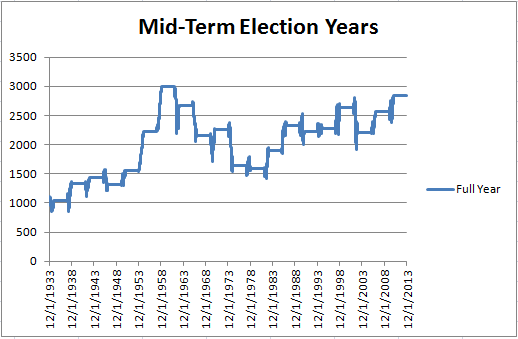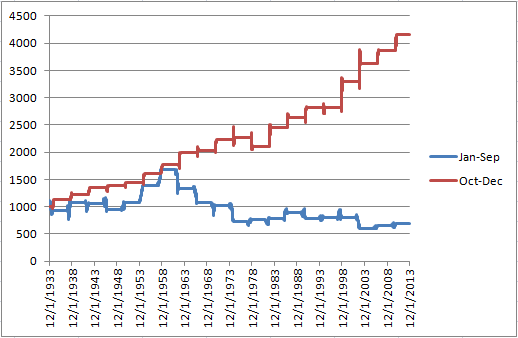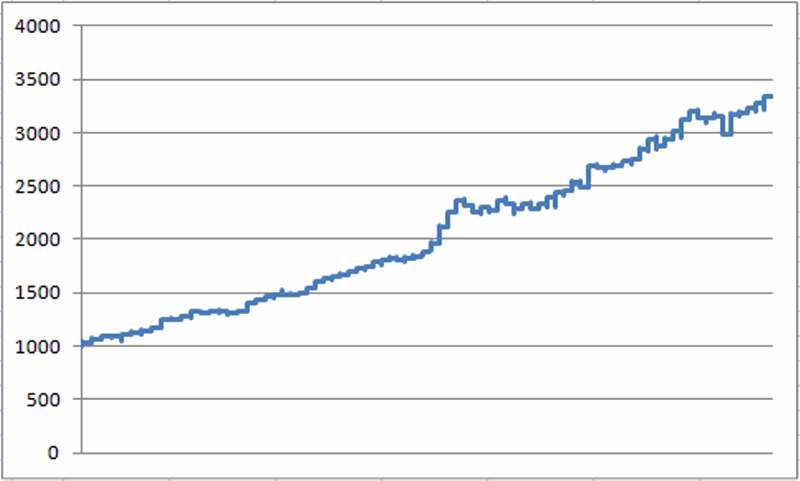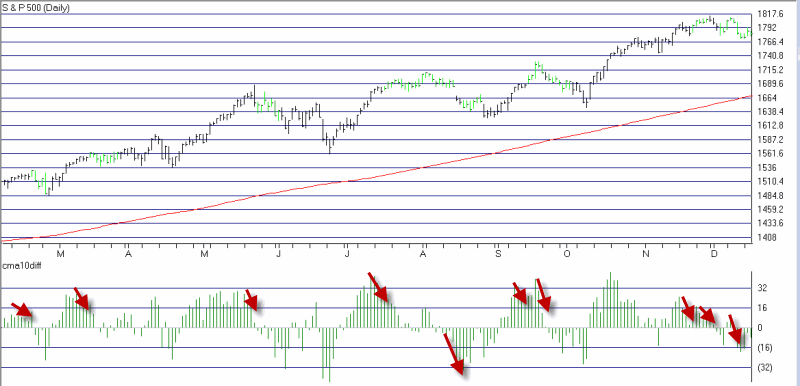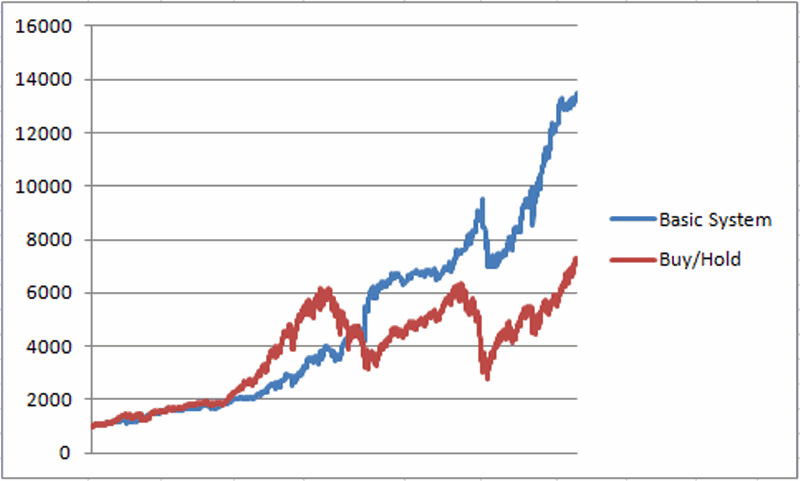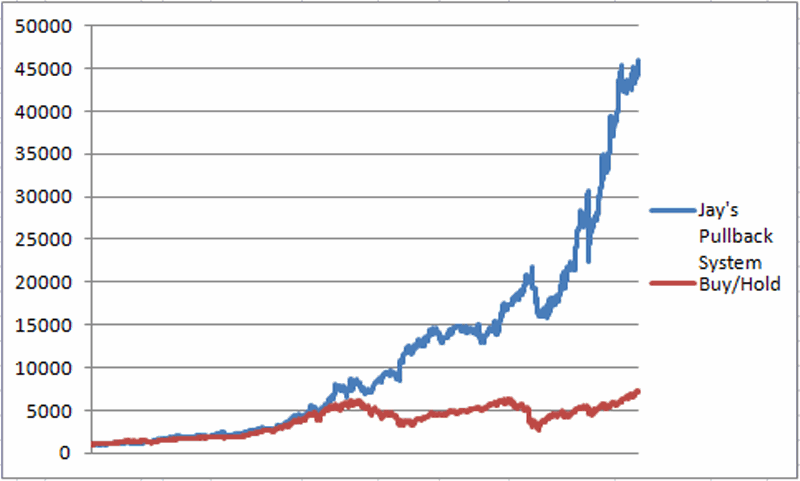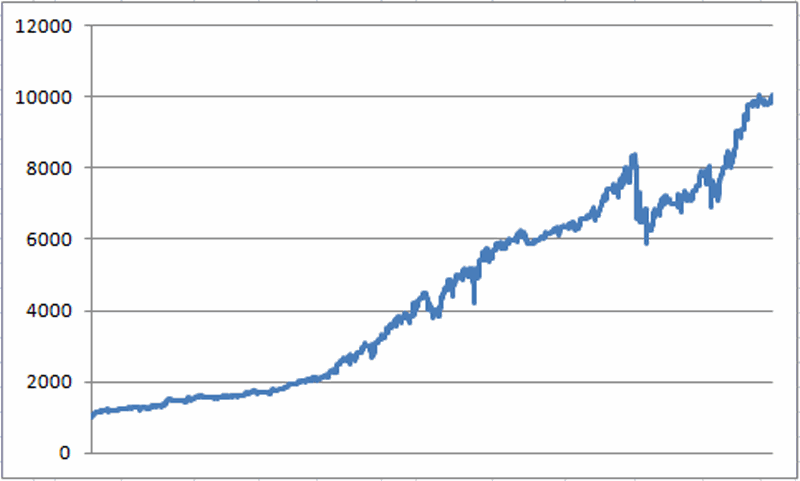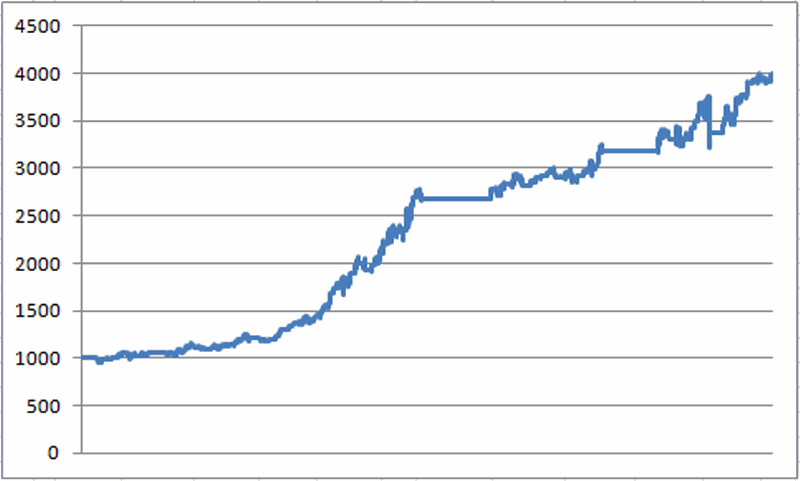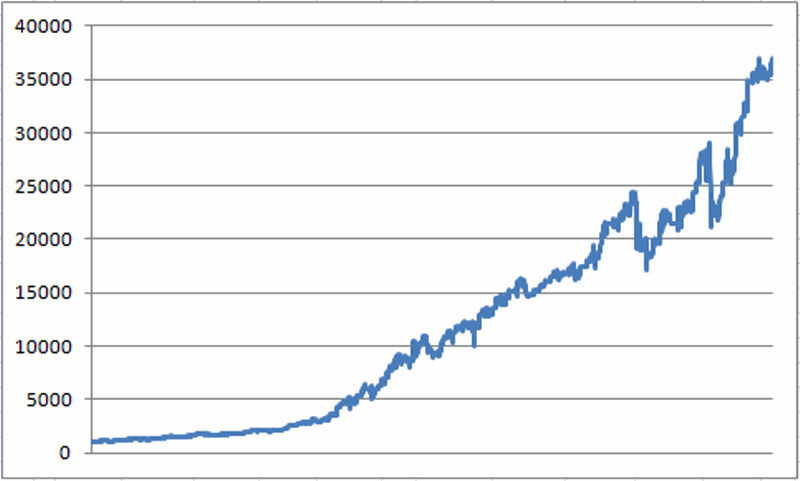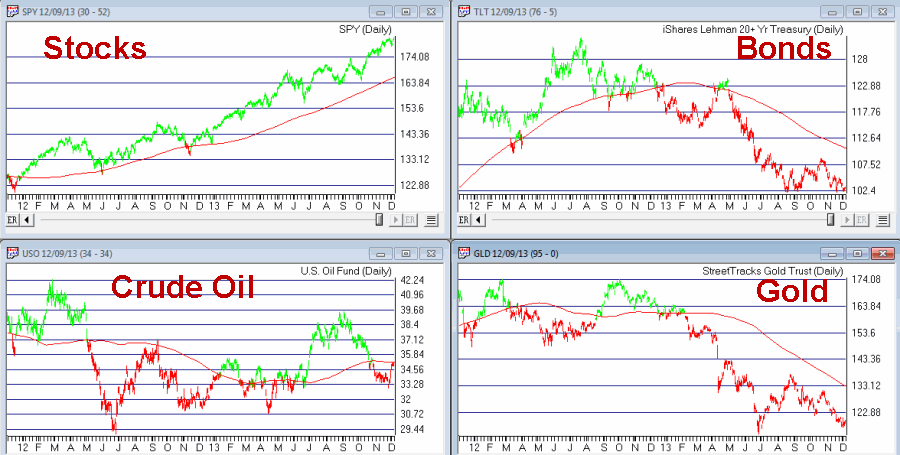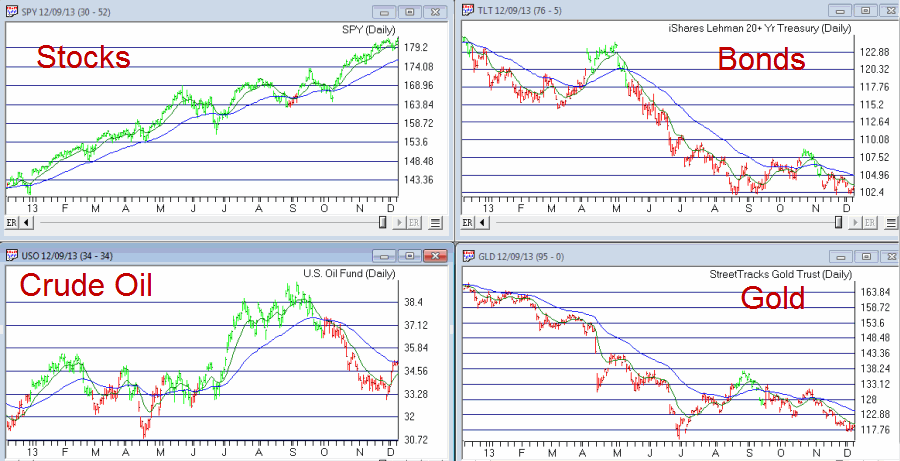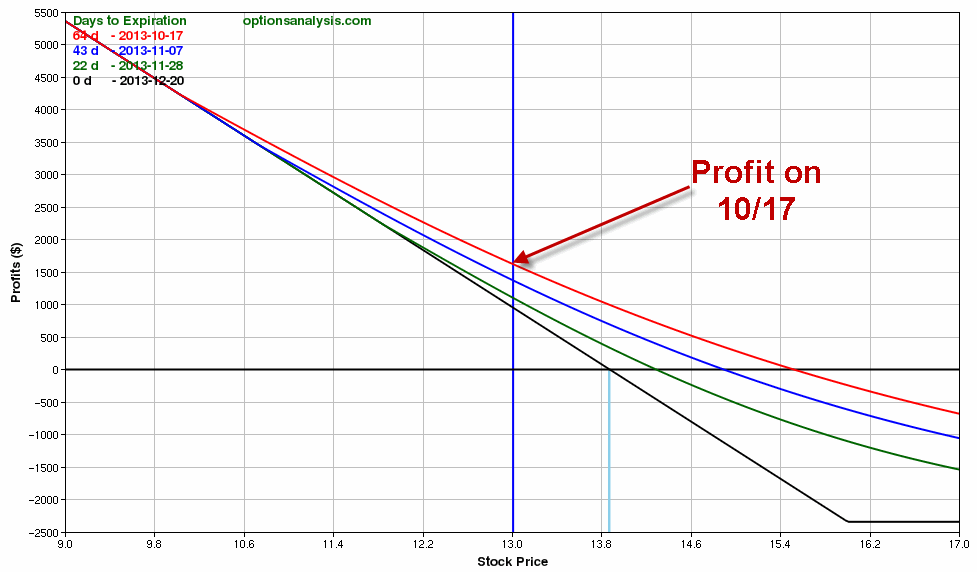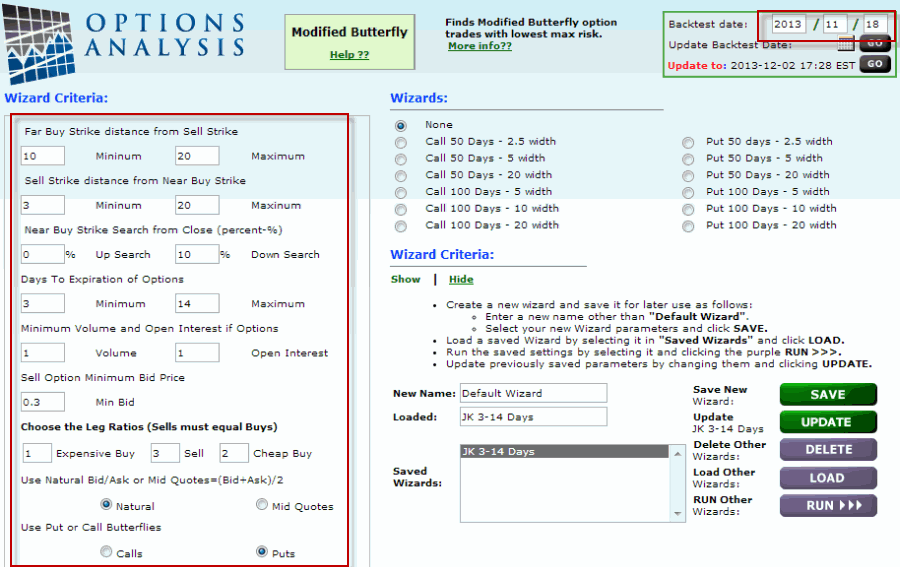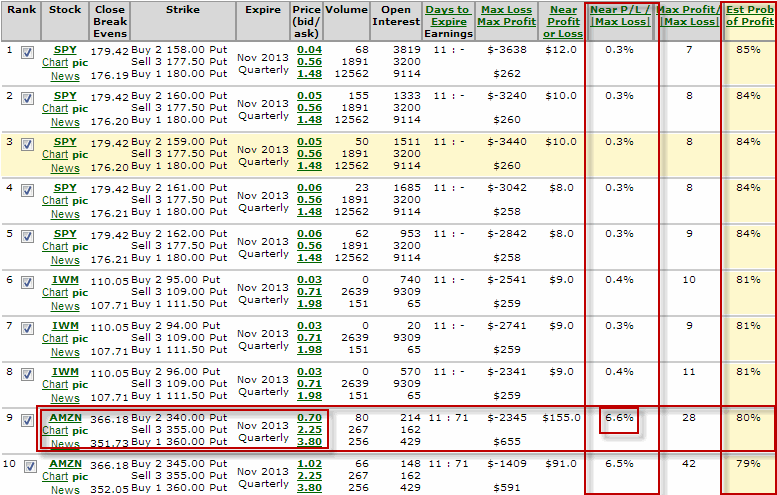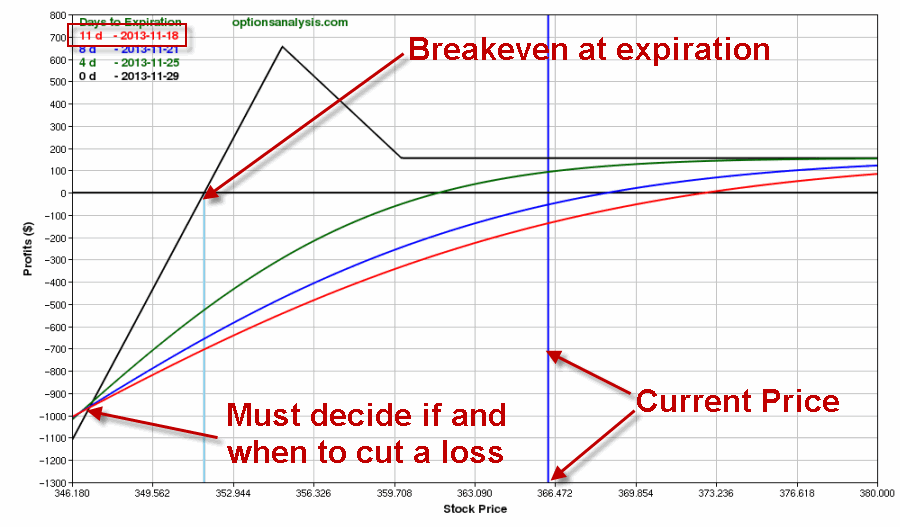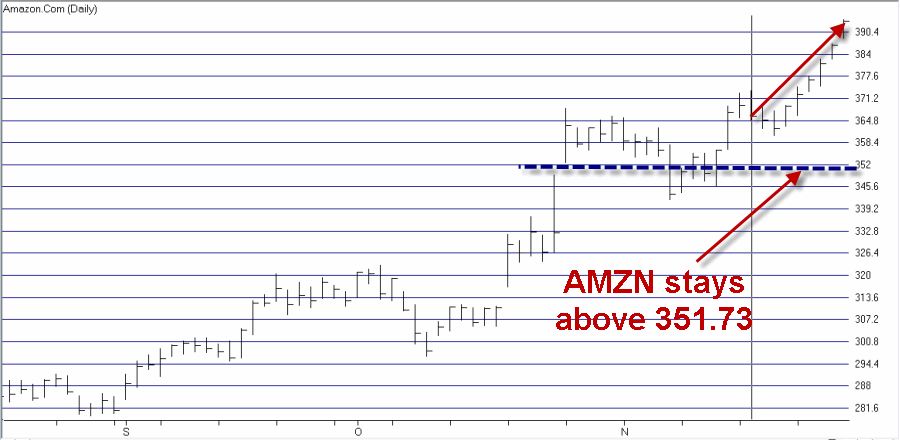Please see my new article in Technical Analysis of Stocks & Commodities magazine titled “New Tricks With Old Indicators” (http://traders.com/) On Sale Now.
Well it’s almost 2014. Time for my annual stock market prediction.
Yah, right. Sorry, I don’t do predictions. Actually, for the record I do, but only in my head – for fun. So you’ll just have to take my word for it that my “predictions track record” isn’t too good.
Now that may sound like a startling self-deprecating admission, but the reality is that I have a tremendous amount of company –made up of people who actually do make predictions “out loud.”
Let me be clear on how I see it: Predictions are a waste of time. Trends are what matters. At the moment it would be impossible to argue that the trend of the stock market is not “up.” So that is the way to play until shown otherwise.
But there are other trends we can also consider in terms of looking ahead.
The Mid-Term Election Year
To put it as succinctly as possible, the mid-term election year has historically been something of a mixed bag. The good news is that the market has showed a tendency to achieve a “major bottom” during mid-term election years. The bad news is that many of those major bottoms were preceded by the requisite “major decline” leading up to said “major bottom.”
The other piece of good news is that most of the “bad stuff” has historically been worked out by the end of September. To illustrate all of this consider the Figures below.
Figure 1 displays the growth of $1,000 invested in the Dow Jones Industrials Average – which can now be achieved by buying a Dow index mutual fund or ETF such as ticker DIA – during every mid-term election year starting in 1934.
Figure 1 – Growth of $1,000 invested in the Dow Jones Industrials Average every mid-term election year since 1934
For the record, $1,000 invested in the Dow only during every mid-term election year since 1934 grew to $2,841.
Now in Figure 2, we break each mid-term election year down into two periods:
Period 1 = January through September
Period 2 = October through December
As you can see, there is “a difference.”
Figure 2 – Growth of $1,000 invested Jan-Sep of mid-term election years (blue line) versus growth of $1,000 invested Oct-Dec of mid-term election years (red line); 1934-present
Here is how it breaks down:
January through September of Mid-Term Election Years = $1,000 declined to $684 (-31.6)
October through December of Mid-Term Election Years = $1,000 grew to $4,154 (+315.4%)
Summary
So should we “sell everything” and “stuff our money in our mattresses” and “come back in October?” Well, not necessarily. As I mentioned at the outset, the trend of the market is presently “up”. But history suggests that 2014 will not be quite the “smooth sailing” that was 2013.
So for now the tentative game plan is:
-Stick with the trend
-Be alert for changes in the trend (have you noticed there has been a lot more “happy talk” lately – i.e., after the fact justification of why the market is up and how everything will start getting better real soon? The more you hear that talk, the more alert you need to be).
-Be ready to be in the market after September 30th, 2014. No matter how things look at that time.
Addendum
OK, I will make one prediction for 2014 – and I have to say that I have been spot on with this one in the past:
The Cubs WILL NOT win the World Series in 2014.
I’m feeling pretty confident about this one….
Jay Kaeppel
